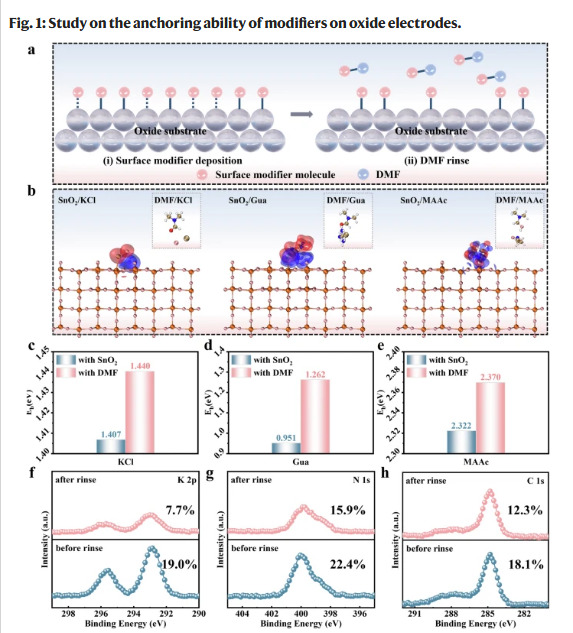The interfacial modifications between perovskite and charge-transport layers can arise from strong chemisorption bonds or weak physical adsorption interactions. However, modifications based on physical adsorption are susceptible to detachment, which not only disrupts the original energy level alignment and defect passivation but also introduces new charge recombination centers. Here, we report a fully chemical modification strategy in which the interfacial modifiers undergo an in situ crosslinking-like reaction, forming a localized, chemically bonded layer that seamlessly extends from the bulk of the underlying transport layer to the interface. Perovskite solar cells (PSCs) fabricated with this fully chemical modification strategy achieve a power conversion efficiency (PCE) of 25.52% (certified 25.49%) under standard conditions, representing one of the highest PCEs reported for devices fully fabricated in an ambient atmosphere. In terms of static stability, unencapsulated devices exhibit linear extrapolated T80 lifetimes of 27,000 h during dark shelf storage and 19,000 h under thermal stress at 85 °C, both of which are record-breaking values for dark shelf and thermal stability, respectively. For dynamic stability, the devices maintain a linear extrapolated T80 lifetime of 2,600 h under light-dark cycling, representing the most dynamically stable PSCs reported to date.

DOI:https://doi.org/10.1038/s41467-025-63588-8
--校内链接--
--校外链接--

微信公众号